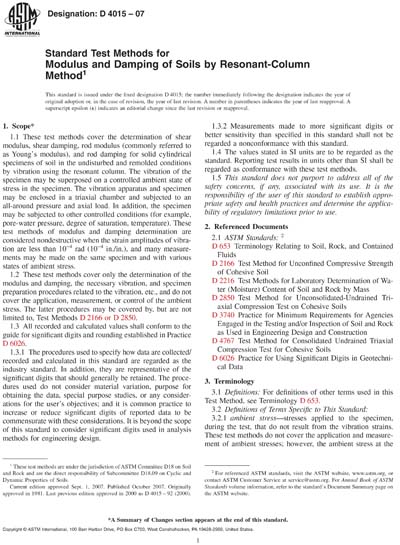Historical
ASTM D4015-92(2000)
Standard Test Methods for Modulus and Damping of Soils by the Resonant-Column Method
1.1 These test methods cover the determination of shear modulus, shear damping, rod modulus (commonly referred to as Young's modulus), and rod damping for solid cylindrical specimens of soil in the undisturbed and remolded conditions by vibration using the resonant column. The vibration of the specimen may be superposed on a controlled ambient state of stress in the specimen. The vibration apparatus and specimen may be enclosed in a triaxial chamber and subjected to an all-around pressure and axial load. In addition, the specimen may be subjected to other controlled conditions (for example, pore-water pressure, degree of saturation, temperature). These test methods of modulus and damping determination are considered nondestructive when the strain amplitudes of vibration are less than 10-4 rad (10-4 in./in.), and many measurements may be made on the same specimen and with various states of ambient stress.
1.2 These test methods cover only the determination of the modulus and damping, the necessary vibration, and specimen preparation procedures related to the vibration, etc., and do not cover the application, measurement, or control of the ambient stress. The latter procedures may be covered by, but are not limited to, Test Methods D2166 or D2850.
1.3 This standard does not purport to address all of the safety concerns, if any, associated with its use. It is the responsibility of the user of this standard to establish appropriate safety and health practices and determine the applicability of regulatory limitations prior to use.
ASTM International [astm]

